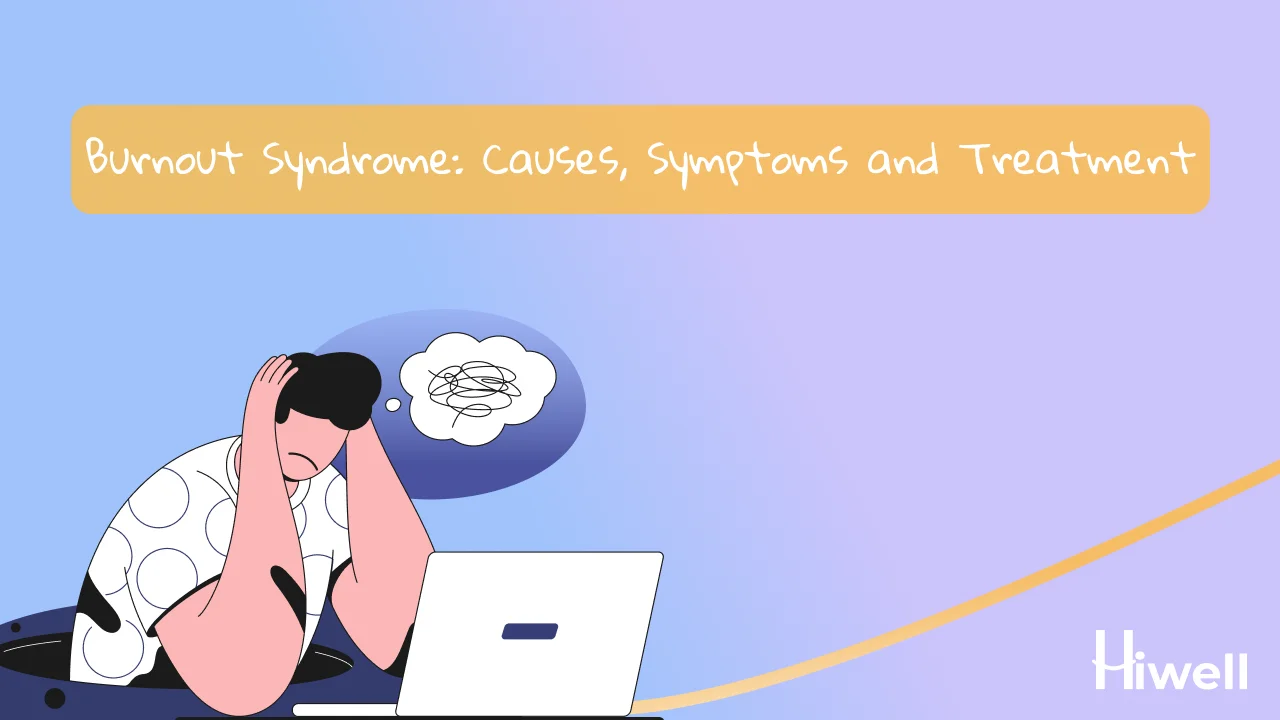
Start feeling better today!
Connect with your therapist today and take control of your life like our 850.000 happy clients.
Get StartedBurnout Syndrome
Contrary to popular belief, burnout syndrome is not a new concept. The concept of burnout was first used by psychologist Herbert J. Freudenberger in 1974. Burnout is defined as a syndrome that develops from the stresses experienced. The state of feeling worn out, with decreased energy, weakness, and dissatisfaction due to intense stress in work life is called burnout syndrome.
Burnout syndrome has three sub-dimensions:
- Emotional and physical exhaustion
- Reduced personal accomplishment
- Depersonalization
In the emotional and physical exhaustion dimension of burnout syndrome, the person thinks that all their physical and emotional resources are exhausted. In this dimension, a state of extreme fatigue is observed. Headaches, stomach cramps, and depression are also seen.
The dimension of burnout syndrome's decrease in personal achievement is the part that takes place internally. In this dimension, the person actually considers situations such as failure and carelessness that occur in burnout syndrome as their own fault and feels inadequate and unsuccessful.
The last dimension, depersonalization, is related to interpersonal relationships. In this dimension, the person may be quite insensitive towards the people around them. They do not fulfill the responsibilities and duties assigned to them in business life and remain insensitive to the increase in the workload of other people.

How to Notice the Burnout Syndrome
There are many symptoms of burnout syndrome. Having one or more of the following symptoms does not necessarily mean you have a burnout. However, if you think you have many of these symptoms, it would be a good idea to take some time off for yourself and seek mental health support.
Psychological and Behavioral Symptoms Showing You Are Burnt Out
- Low life energy
- Depression
- Anger
- Anxiety
- Feelings of guilt
- Lack of self-confidence
- Crying attacks
- Forgetfulness
- Reluctance to work or absenteism
- Not complying with the rules
- Conflicting with colleagues
- Decrease in job satisfaction and quality
- Procrastination

Physiological Symptoms Showing You Are Burnt Out
- Decreased immunity due to stress
- Chronic fatigue
- Weight loss or gain
- Headaches
- Stomach problems
Why Does Burnout Syndrome Occur?
Intense work conditions, a stressful work environment, and heavy workload are some of the reasons that trigger burnout syndrome. However, burnout syndrome does not exist only due to work conditions. Personality traits are also important factors in burnout syndrome. Factors such as family issues, the burdens of daily life, and difficulties with coping with stress also affect burnout syndrome. Therefore, it is necessary to analyse these factors individually and organizationally.
Individual Causes of Burnout Syndrome
Personality traits play an effective role in burnout syndrome. People who are perfectionist, self-centered, aggressive, achievement-oriented, and who have a high sense of responsibility are more likely to suffer from burnout syndrome. The reason for this is that people with these personality traits are more likely to be success-oriented and workaholic. Workaholics spend most of their lives working at the expense of their social lives. This eventually leads to a significant decrease in social support.
People with reduced social support find it very difficult to cope with stress, and therefore, they are prime targets for burnout syndrome. What other people expect from them also affects burnout syndrome. When these expectations in work life are not met, burnout syndrome begins to form. People with low self-confidence and self-efficacy are more likely to suffer from burnout syndrome in connection with their inability to handle problems in business life.
Organizational and Environmental Reasons for Burnout Syndrome
It is obvious that burnout syndrome is associated with decreased work-life balance. It is known that situations such as stressful environments in business life, long working hours, busy schedule, excessive responsibilities, time problems, status problems, intense demands, and unsatisfactory salaries trigger burnout syndrome.
Negative business environments where issues such as unfair competition with co-workers, being supervised by people with insufficient education, lack of reward, a noisy environment, and working hours on special days are present also trigger burnout syndrome.
Stages of Burnout Syndrome

Burnout syndrome does not appear or progress suddenly. It slowly and insidiously enters our lives as our stress and workload increase or our job satisfaction decreases. Burnout syndrome consists of four sequential stages.
1. Enthusiasm
At this stage, the person is hopeful, energetic, enthusiastic and hard-working about business life. A person who is eager to do their job in the best way may not be able to spare time for themselves and their surroundings. They do not see insomnia, stress, or busy hours as a problem.
2. Downturn
At this stage, the person's desire and enthusiasm for their work begin to decrease. They see the details that they did not consider as a problem before. They begin to realize that their workload has spread to their life outside of work. They question what is going on in the work environment and are less satisfied with their work.
3. Frustration and Disappointment
At this stage, the person begins to feel hindered both while doing his job and because of it. The feeling of frustration leads to a decrease in interest and job satisfaction, as well as anger that begins to develop. The person begins to withdraw from their job and work environment.
4. Recklessness
At this final stage, frustration and anger brought on by being blocked give way to complete indifference. The person becomes indifferent or unconcerned about the future or performance because the more they care, the more upset and angry they get.
How to Get Rid of Burnout Syndrome?
The treatment for burnout syndrome includes several steps like the stages in its development:
- The person's ability to notice the changes seen in themselves and to analyse them
- Talking about expectations and goals for the job and being rational about it
- Working to cope with stress
- Reducing monotony in business life by changing the way work is done
- Finding and working on real business and office problems
- Getting social support, family support, and professional support
- Focusing on and fostering positive sides of the work and the workplace
- Several issues such as investigating the individual dimension of the stress experienced in business life need to be studied.
In order to overcome the burnout syndrome, you can share your unique story with our expert clinical psychologists in a therapy setting and work on the problems together.
Sources
- Dolgun, U. (2010). Burnout Syndrome, Current Issues in Organizational Behavior, Ekin Bookstore, Bursa, ss. 287-311.
- Göktepe, A. (2016). Burnout Syndrome, Nesil Publications, Istanbul.





